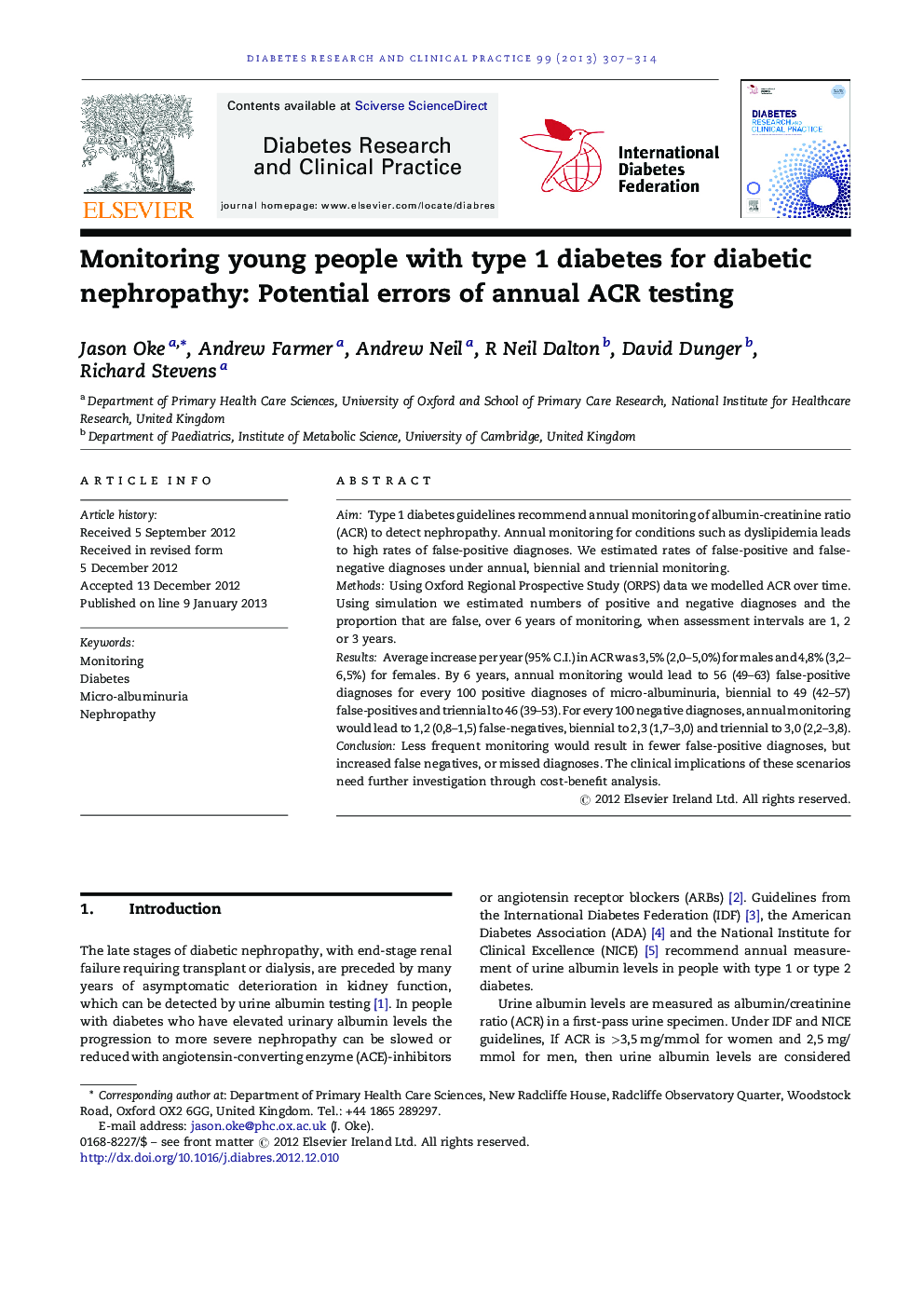| Article ID | Journal | Published Year | Pages | File Type |
|---|---|---|---|---|
| 2796796 | Diabetes Research and Clinical Practice | 2013 | 8 Pages |
AimType 1 diabetes guidelines recommend annual monitoring of albumin-creatinine ratio (ACR) to detect nephropathy. Annual monitoring for conditions such as dyslipidemia leads to high rates of false-positive diagnoses. We estimated rates of false-positive and false-negative diagnoses under annual, biennial and triennial monitoring.MethodsUsing Oxford Regional Prospective Study (ORPS) data we modelled ACR over time. Using simulation we estimated numbers of positive and negative diagnoses and the proportion that are false, over 6 years of monitoring, when assessment intervals are 1, 2 or 3 years.ResultsAverage increase per year (95% C.I.) in ACR was 3,5% (2,0–5,0%) for males and 4,8% (3,2–6,5%) for females. By 6 years, annual monitoring would lead to 56 (49–63) false-positive diagnoses for every 100 positive diagnoses of micro-albuminuria, biennial to 49 (42–57) false-positives and triennial to 46 (39–53). For every 100 negative diagnoses, annual monitoring would lead to 1,2 (0,8–1,5) false-negatives, biennial to 2,3 (1,7–3,0) and triennial to 3,0 (2,2–3,8).ConclusionLess frequent monitoring would result in fewer false-positive diagnoses, but increased false negatives, or missed diagnoses. The clinical implications of these scenarios need further investigation through cost-benefit analysis.
